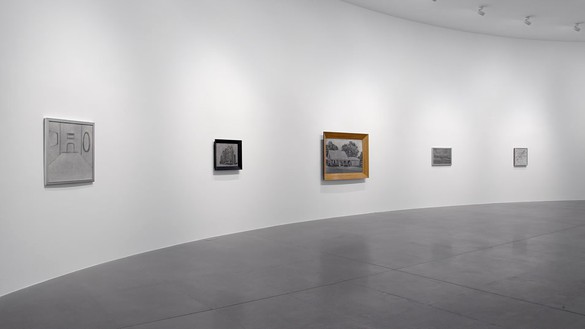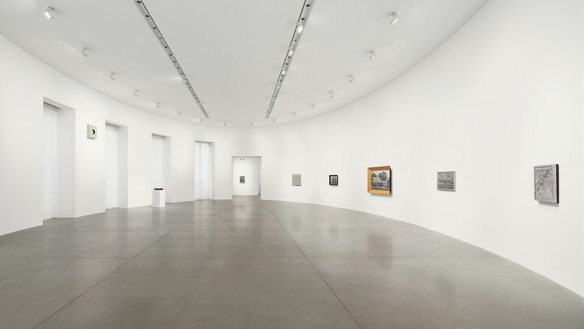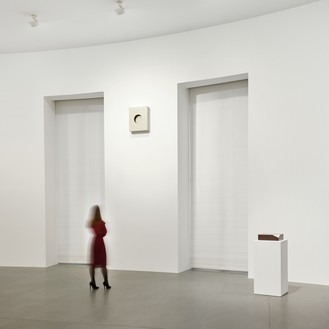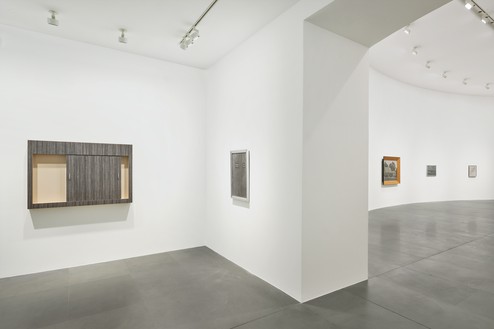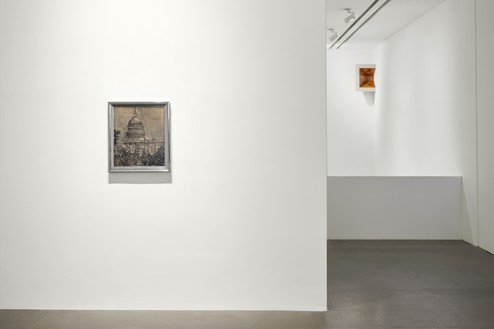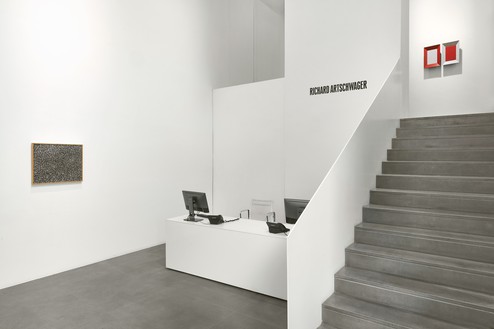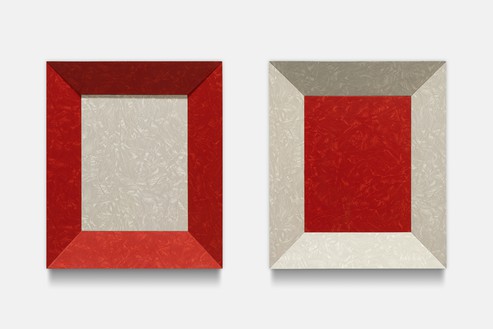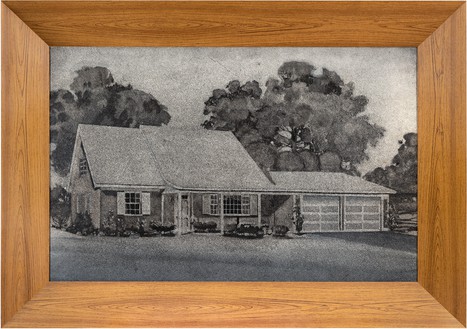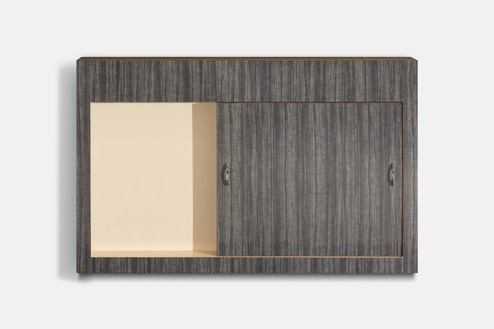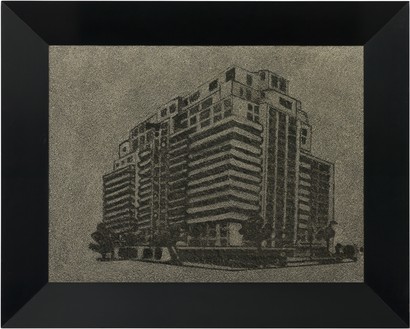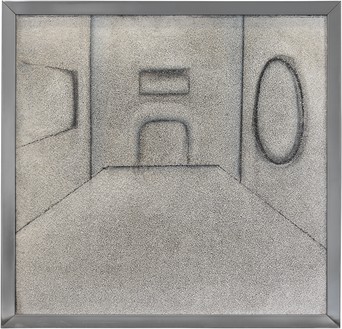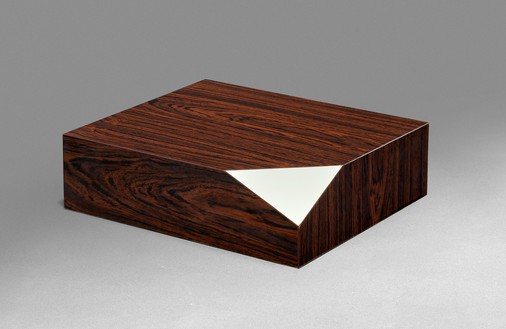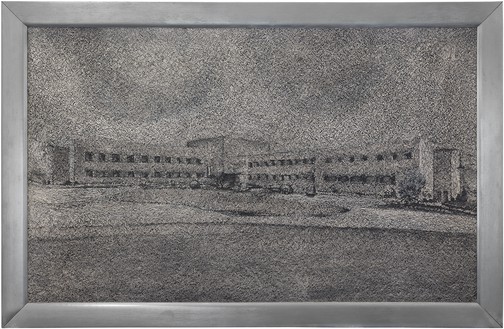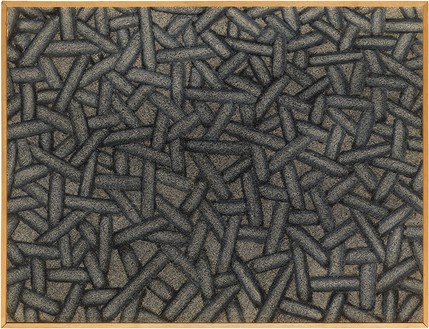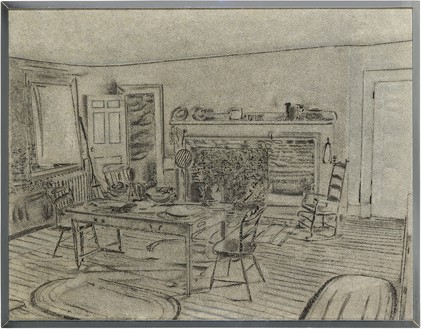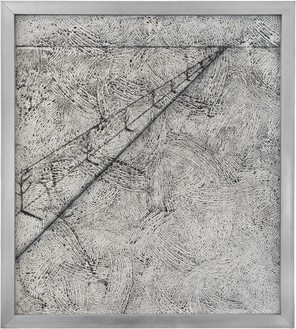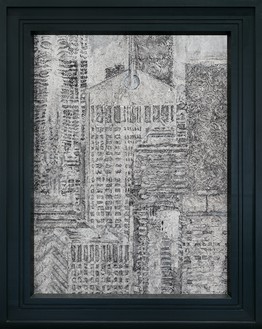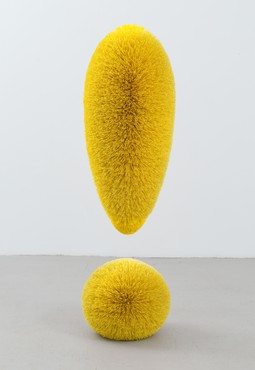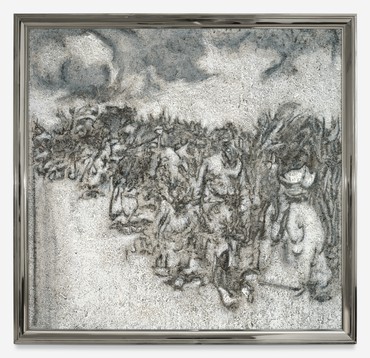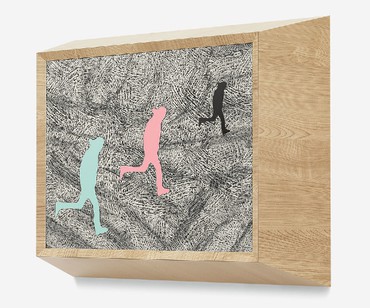Extended through April 24, 2021
About
Form always begins with a something. And then if that something occurs in another place, there is slippage involved and what is created as a result develops a parallel existence to the original thing.
I have located my art in terms of reducing all objects to the attention they demand. This gives me a good shot at innovation, to put it boldly.
—Richard Artschwager
Gagosian is pleased to present an exhibition of works by the late Richard Artschwager from a key period in his career, 1964 to 1987.
Associated with many genres but conforming to none, Artschwager’s art has been variously described as Pop, because of its incorporation of quotidian objects and commercial materials; as Minimal, due to its crisp forms and solid geometric presence; and as Conceptual, owing to its cerebral engagement with information. This rare survey of the early decades of Artschwager’s varied career demonstrates his ability to rearrange the structures of perception, bringing the deceptive pictorial world of images into direct confrontation with the concretely human world of objects.
La forma inizia sempre con un qualcosa. E poi, se quel qualcosa si manifesta in un altro luogo, vi è uno scarto e il risultato che si crea sviluppa un’esistenza parallela rispetto all’originale.
Ho collocato le mie opere in maniera da riportare tutti gli oggetti all’attenzione che richiedono. Questo mi consente di innovare, e di farlo con audacia.
—Richard Artschwager
Gagosian è lieta di presentare una mostra di opere di Richard Artschwager appartenenti a un periodo chiave della sua carriera che va dal 1964 al 1987.
Il lavoro di Artschwager, associato a molti generi ma conforme a nessuno di essi, è stato variamente descritto come Pop, perché incorpora oggetti quotidiani e materiali commerciali; come Minimal, per le sue forme nitide e la sua presenza solido-geometrica; e come Concettuale, per il suo coinvolgimento intellettuale con il significato. Questa rara rassegna dei primi decenni della ricca carriera di Artschwager testimonia la sua abilità nel riorganizzare le strutture percettive, mettendo a confronto diretto il mondo illusorio e figurato delle immagini con quello concretamente umano degli oggetti.
Attraverso variazioni di scala e trasposizioni di forme e materiali, le opere di Artschwager sollecitano una continua rivalutazione dello spazio e del tempo, suggerendo narrazioni articolate, complessità compositive al tempo stesso ordinarie e surreali. Impiegando materiali sintetici, commerciali e industriali, Artschwager ha trasformato le sue fonti con quella imperturbabile arguzia visuale che rende “inusuale” il familiare. Nel 1962 l’artista inizia ad utilizzare la Formica, un materiale radicalmente anticonvenzionale e di “bassa” qualità, noto all’epoca per essere utilizzato nella realizzazione delle superfici lisce dei banchi. La sua finitura lucida e marmorizzata è riconoscibile negli oggetti di vita quotidiana e presenta al tempo stesso una somiglianza astratta con la pittura espressionista. I primi anni Sessanta segnano anche l’inizio dell’uso sperimentale da parte di Artschwager del Celotex: un materiale molto ruvido, composto da fibre di canna da zucchero compressa, che utilizzava come base per i suoi singolari dipinti in grisaille, nei quali l’originalità del materiale industriale si confonde con le linee disegnate a mano. Queste composizioni erano spesso basate su soggetti sia arcani che ordinari; Interior (1964), per esempio, è un’immagine prospettica, semi-astratta e diagrammatica dell’interno di una stanza, che si restringe con il progredire della percezione della profondità.
Le opere scultoree di Artschwager dimostrano come l’artista abbia integrato le competenze artigianali nella sperimentazione intellettuale e formale della percezione e della composizione. In Sliding Door (1964), l’anta di un armadietto proietta un’ombra all’interno del pallido interno dell’opera generando un motivo in continuo cambiamento che si sposta insieme alla luce e ai movimenti dello spettatore attorno all’oggetto. Untitled (1965), realizzato in Formica e legno, utilizza allo stesso modo la curvatura di un cerchio; sebbene non funzionale, imita l’estetica utilitaristica di un altoparlante o di un elettrodomestico, dimostrando la capacità di Artschwager di soddisfare le nostre aspettative rispetto ad un oggetto o ad un quadro solo per poi sovvertirle.
Un catalogo illustrato bilingue sarà pubblicato in occasione della mostra, con un saggio del curatore Dieter Schwarz.
Gagosian desidera ringraziare CFHILL Art Space, Stoccolma, per la collaborazione a questo progetto.
Una retrospettiva dell’opera di Artschwager, curata dal rimpianto Germano Celant, è stata inaugurata al Mart – Museo di Arte Moderna e Contemporanea di Trento e Rovereto nell’ottobre 2019 spostandosi poi al Guggenheim Museum di Bilbao nel febbraio 2020.
#RichardArtschwager
Artist
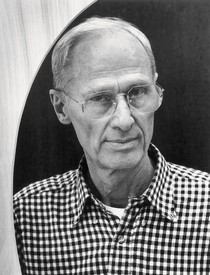
Richard Artschwager
A conversation between Adam McEwen and Bob Monk.

Artists’ Magazines
Gwen Allen recounts her discovery of cutting-edge artists’ magazines from the 1960s and 1970s and explores the roots and implications of these singular publications.
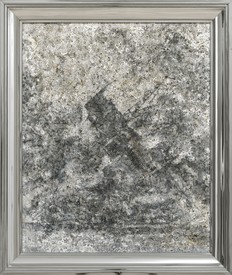
Richard Artschwager
On the occasion of the exhibition Richard Artschwager: Primary Sources, recently on view at Gagosian, New York, Bob Monk and Maggie Dougherty explore the artist’s use of reference materials as the impetus for his paintings.

Now available
Gagosian Quarterly Spring 2019
The Spring 2019 issue of Gagosian Quarterly is now available, featuring Red Pot with Lute Player #2 by Jonas Wood on its cover.
News
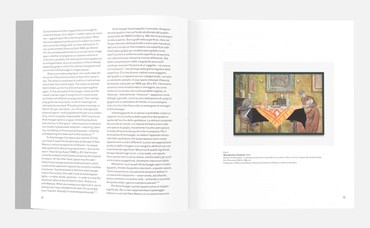
Online Reading
Richard Artschwager
Richard Artschwager is available for online reading from April 19 through May 18 as part of the From the Library series. This book was published on the occasion of Richard Artschwager at Gagosian, Rome. It focuses on seventeen works from a key period in the artist’s varied career, 1964 to 1987, which demonstrate his ability to rearrange the structures of perception, bringing the deceptive pictorial world of images into direct confrontation with the concretely human world of objects. The bilingual publication (English/Italian) features a new essay by curator Dieter Schwarz.
Richard Artschwager (New York: Gagosian, 2021)
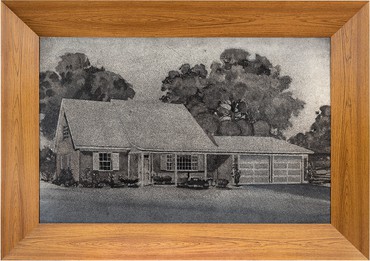
In Conversation
Richard Armstrong and John Torreano
On Richard Artschwager
Thursday, April 22, 2021, 1:30pm edt
On the occasion of Richard Artschwager at Gagosian in Rome, join us for a conversation about the artist with Richard Armstrong, director of the Solomon R. Guggenheim Museum and Foundation, and artist John Torreano, longtime friends of Artschwager’s. Alongside contemporaries such as Robert Rauschenberg and Cy Twombly, Artschwager was a key figure in twentieth-century American art, forging a maverick path by confounding the traditional limits of art and reconfiguring the visual comprehension of space. The pair will discuss the genre-defying and often cerebral work of the late artist, whose varied career demonstrates his ability to rearrange the structures of perception. To join the online event, register at eventbrite.com.
Richard Artschwager, Tract Home, 1964 © 2021 The Estate of Richard Artschwager/Artists Rights Society (ARS), New York. Photo: Julien Grémaud
